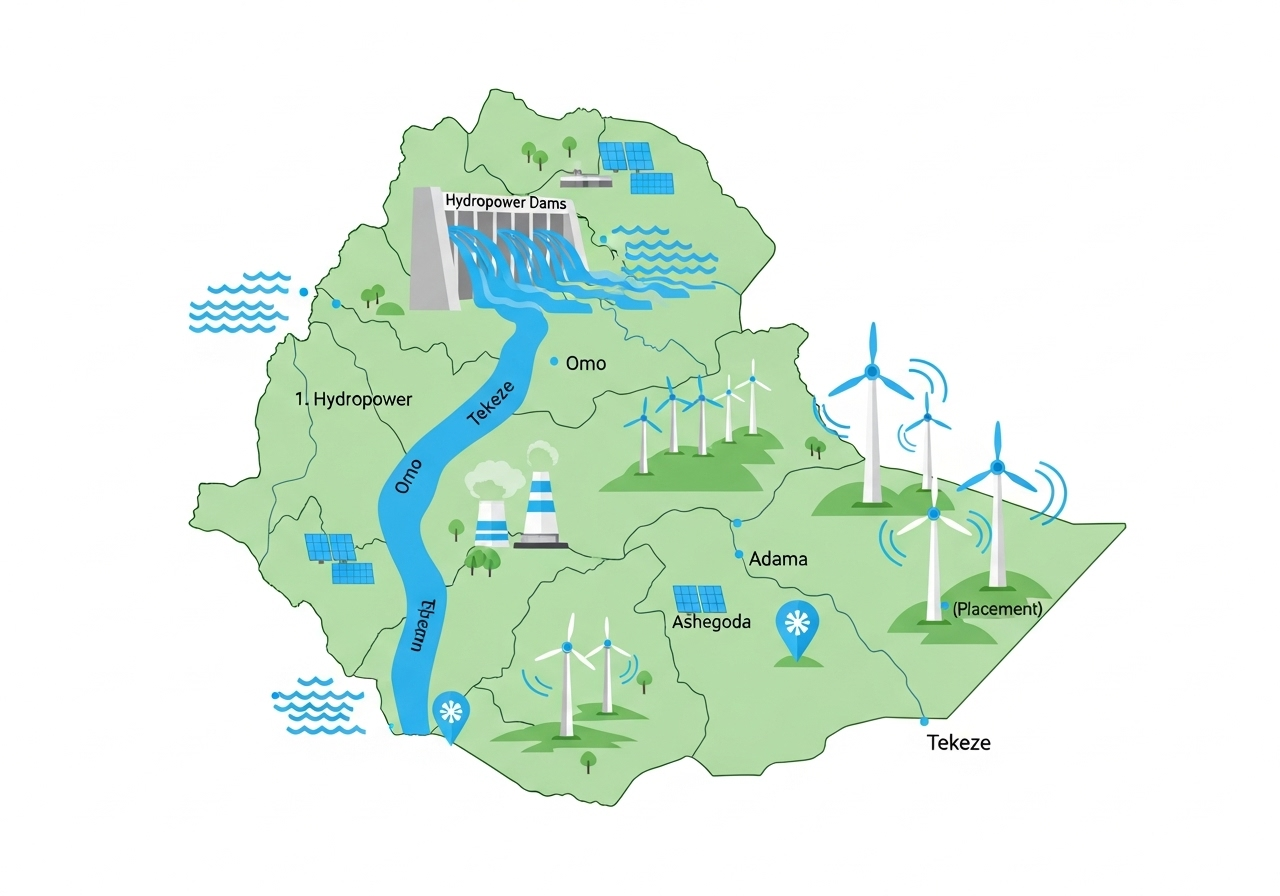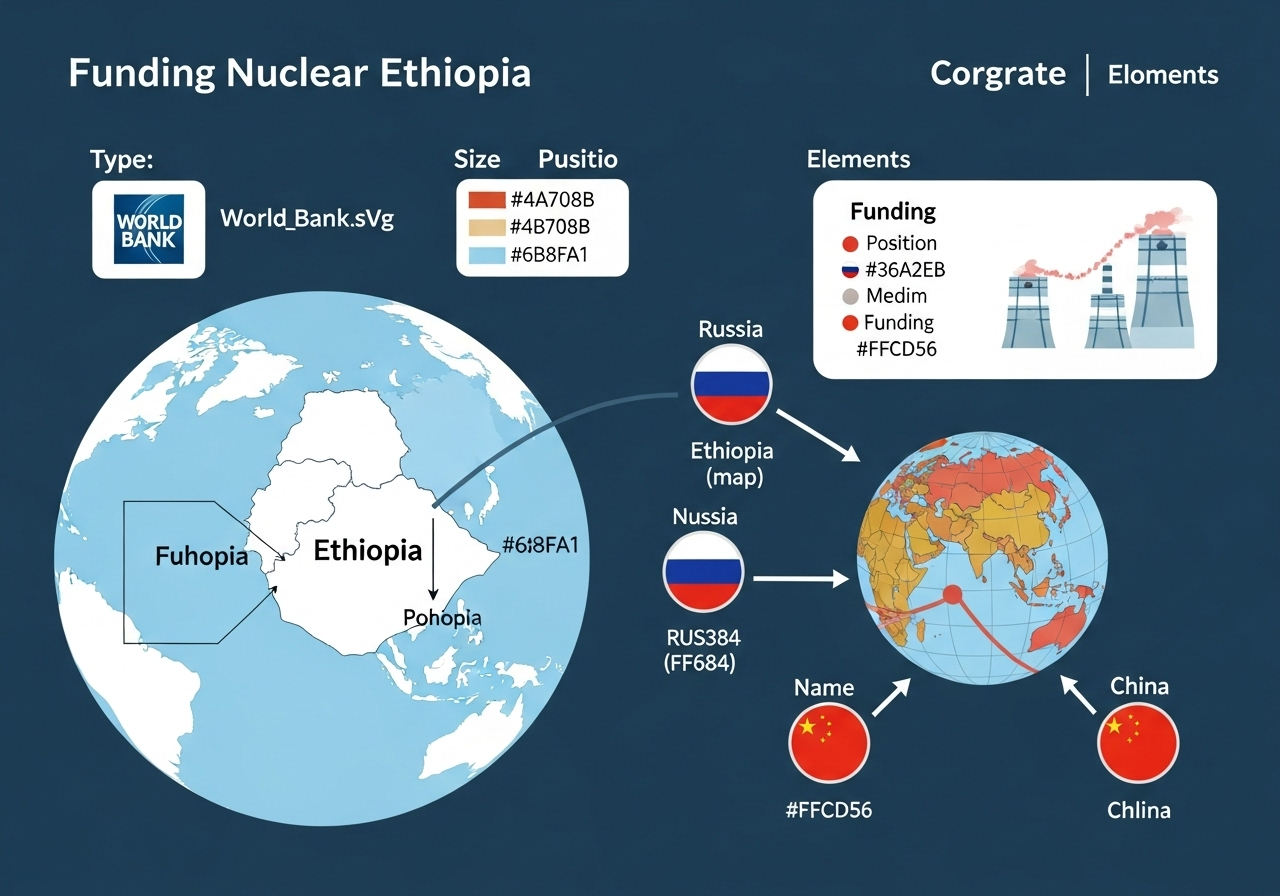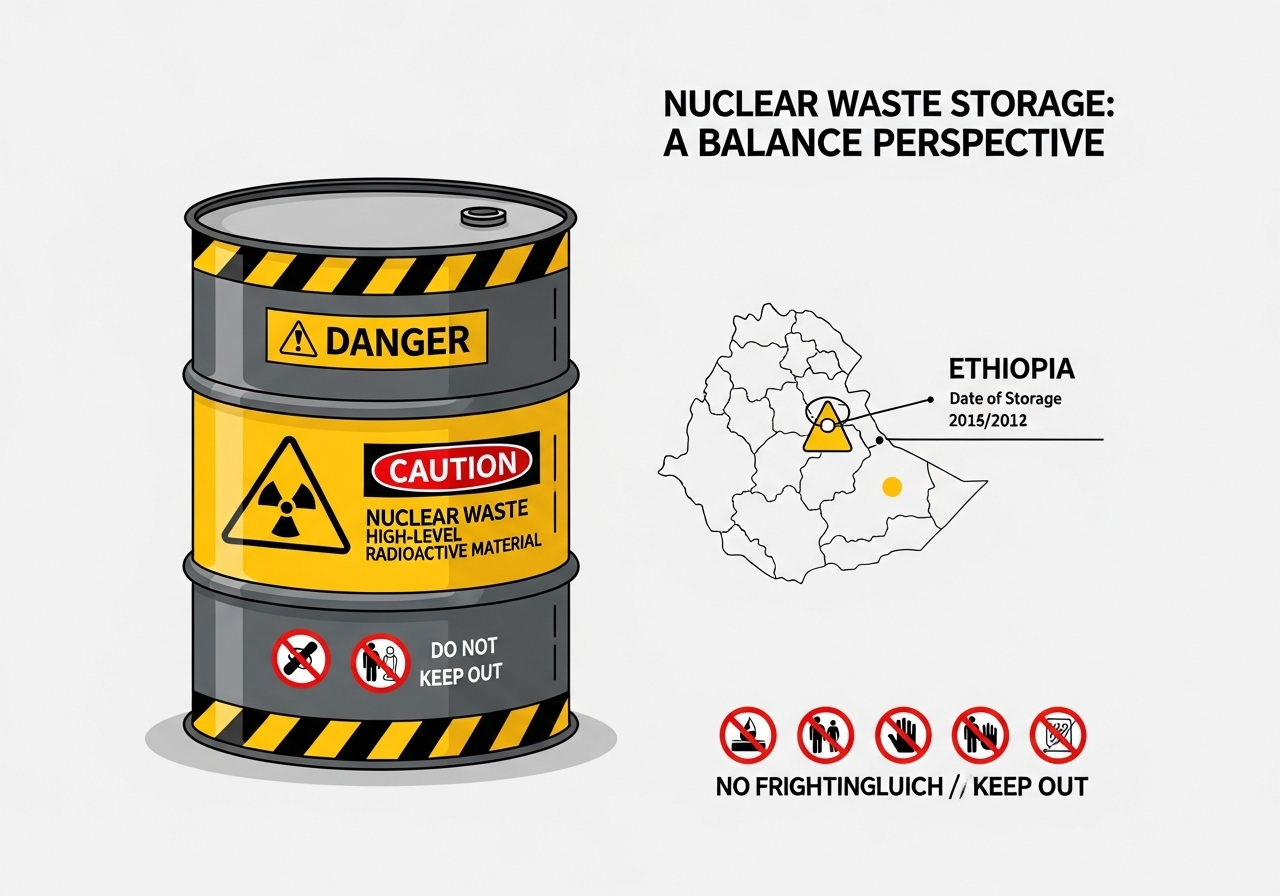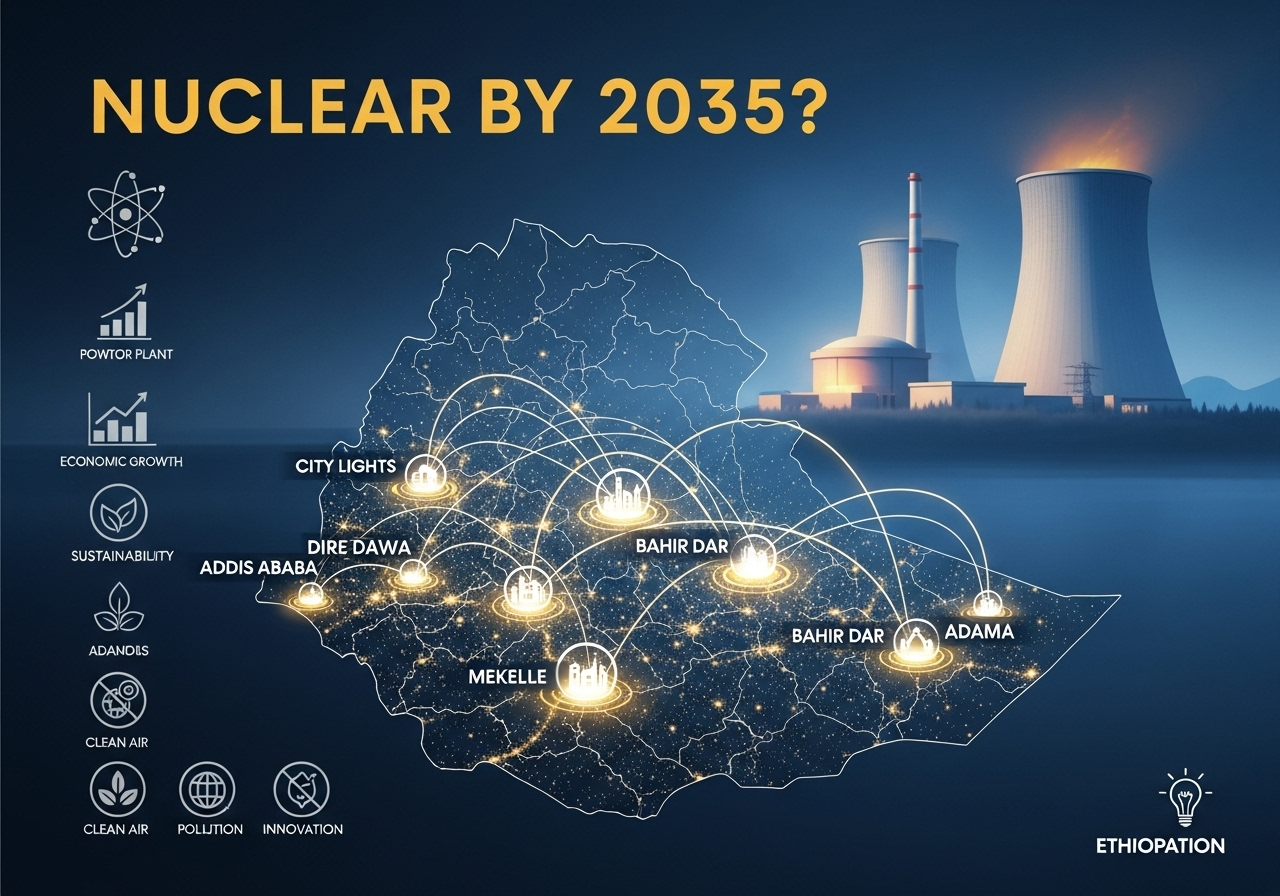Introduction
Ethiopia nuclear power is now a serious topic in the country’s energy plans. Electricity demand is rising fast, and the government needs stable options. For years, hydropower has carried most of the load. But droughts, climate risk, and access problems show that Ethiopia cannot depend on it alone. This is why nuclear energy in Ethiopia is being discussed today.
Ethiopia’s Energy Landscape & Motivation for Nuclear
Current energy mix and challenges
The Ethiopia energy mix is dominated by hydropower. Around 80–90% of the country’s electricity comes from dams and rivers. But there are clear hydropower Ethiopia limitations. Droughts lower water levels. Climate change makes rainfall less predictable. Seasonal variation often cuts power when people need it most.
Solar and wind have been added in recent years. But weak grids, higher costs, and weather dependence limit their role. This means electricity access Ethiopia is still a major issue. Millions of rural households remain without a stable connection.

Why nuclear is being considered now
Here nuclear energy advantages stand out. Nuclear can provide baseload nuclear power, which means steady supply every day, all year. For Ethiopia, this would reduce the climate risks tied to hydropower. It would also improve energy security Ethiopia, giving industries and cities the reliability they need.
The bigger goal is Ethiopia energy diversification. A mix of nuclear, renewables, and other sources could make the system stable. That is why the future of nuclear Ethiopia is being seen as more than a power source. It is about growth, independence, and long-term stability.
Historical Background & Agreements on Nuclear in Ethiopia
Early plans, research & memorandums
Ethiopia has been looking at nuclear energy for decades. Past studies focused on the nuclear feasibility Ethiopia, but progress was slow. Several Ethiopia nuclear agreements were signed in the form of memorandums. These MoU nuclear Ethiopia efforts aimed to build local expertise and study possible reactor sites.
Recent Russia–Ethiopia nuclear deal & roadmap
The most important step came with the Russia Ethiopia nuclear partnership. Ethiopia signed a major agreement with Rosatom, Russia’s state nuclear company. According to Business Insider Africa and Addis Standard, this cooperation includes training, research, and future plant construction.
The Ethiopia nuclear roadmap sets a goal of building two nuclear power units between 2032 and 2034. The plan also highlights cooperation with the IAEA nuclear Ethiopia program. International nuclear agencies are expected to provide oversight, safety guidelines, and technical support.
Technical Feasibility, Design Options & Timeline
Reactor technology & scale (large reactors vs SMRs)
Ethiopia is considering different nuclear reactor types. One option is large pressurized water reactors. Another is small modular reactors Ethiopia, also called SMRs. Large reactors can produce more electricity at once, but they are expensive and need stronger infrastructure. SMR nuclear Africa is seen as flexible and easier to manage, though they provide smaller output.
Timeline / project phases & milestones
The government has already started early steps in planning and regulation. These include safety laws, training staff, and setting up agencies. Reports from Business Insider Africa, The Reporter Ethiopia, and Addis Standard say construction is expected to move in phases.
The plan includes site development, infrastructure, and international cooperation. If everything stays on track, the first Ethiopia nuclear commissioning date is expected around 2032–2034. This timeline shows how long nuclear projects take to move from idea to operation.
Infrastructure & grid readiness
A nuclear plant needs more than just reactors. It requires cooling systems, steady nuclear cooling water Ethiopia supply, and large transmission networks. The country’s current grid has limits. Electric grid Ethiopia challenges include weak connections and frequent outages.
Adding nuclear means stronger transmission and better load balancing. Integrating nuclear with renewables will also need upgrades. Grid integration nuclear power is not simple, but planning has started.
Benefits & Opportunities of Nuclear Power in Ethiopia
Energy security and baseload power
Nuclear can provide stable nuclear baseload power. This means steady output, day and night. It helps reduce blackouts and supports wind and solar when weather changes. This gives more reliable electricity Ethiopia. Over time, it builds energy security Ethiopia. The country will depend less on seasonal rivers.
Environmental and climate impact
Nuclear plants produce very low emissions. Nuclear low carbon energy can cut greenhouse gases compared to coal or oil. Supporters point to the climate benefits nuclear brings. It avoids the air pollution of fossil fuels. In terms of nuclear vs coal emissions, nuclear has a much smaller footprint.
Economic development, jobs & technology growth
Nuclear projects bring jobs during construction and operation. Thousands of workers will be needed. This supports nuclear jobs Ethiopia. It also creates space for nuclear technology transfer. Engineers, scientists, and regulators get training and experience. Long term, capacity building in nuclear can spread to medicine, agriculture, and industrial research.
Challenges, Risks & Criticisms
High cost, financing & investment risk
The biggest issue is money. Nuclear cost Ethiopia is very high compared to solar or hydro. Building a single plant costs billions. The cost per kWh nuclear is debated, with risks of delays and overruns.
Finding money is a challenge. Financing nuclear projects may involve foreign loans, state budgets, or private investment. Debt pressure is a major concern.
Safety, regulation & public acceptance
Ethiopia will need strong laws and regulators. Nuclear safety Ethiopia depends on proper oversight, security, and trained staff. Across Africa, nuclear regulation Africa is still developing. Ethiopia must work with IAEA and partners to build safe systems.
Public trust is another factor. Public acceptance nuclear can be hard to achieve. People fear accidents and waste, and some may protest projects near their homes.
Waste management, decommissioning & waste disposal
Handling waste is one of the biggest questions. Nuclear waste Ethiopia would need safe storage for decades. There must be clear rules for radioactive disposal. Building secure storage sites is costly and sensitive. When plants close, decommission nuclear reactors costs are high. This must be planned from the start.
Water, cooling & environmental constraints
Nuclear plants need large amounts of water. Nuclear cooling water is critical for safe operation. This raises risks for rivers and lakes. Environmental impact nuclear power includes heated water discharge into ecosystems. If not managed, thermal pollution nuclear could harm local fish and biodiversity.
Ethiopia’s nuclear power with key points
| Topic | Details |
|---|---|
| Current Status | Ethiopia nuclear plan status is at the planning stage. A nuclear roadmap Ethiopia is being prepared. |
| Target Year | Goal is Ethiopia nuclear by 2035. 2030 is seen as unrealistic. |
| Reactor Type | No final decision. Debate is SMR vs traditional reactor. SMRs are considered more suitable. |
| Main Motivations | Energy diversification, stable baseload supply, reduce over-reliance on hydropower, climate resilience. |
| Key Challenges | Nuclear safety Ethiopia, nuclear waste disposal Ethiopia, high costs, trained workforce shortage. |
| Estimated Cost | Cost of nuclear Ethiopia could reach several billion USD. |
| Funding Sources | Financing nuclear Ethiopia may come from Russia, China, World Bank, and international loans. |
| Partners | Ethiopia is in talks with Russia’s Rosatom and possibly China. |
| Regulation | Need for a strong nuclear authority and clear laws before construction starts. |
| Public Concerns | Safety risks, waste storage, and long-term environmental impact. |
Case Studies & International Comparisons
Nuclear in Africa / African countries with or planning nuclear
Ethiopia is not alone. Africa nuclear power projects already exist or are planned in countries like South Africa, Egypt, and Nigeria. Nuclear in Egypt is moving forward with Russian support.
Nuclear South Africa lessons show both opportunities and challenges in cost, safety, and politics. Ethiopia can learn from these cases before starting full projects.
SMR / small nuclear projects in developing countries
Globally, many developing countries are looking at SMR in developing countries. Small modular reactors are cheaper, faster to build, and flexible. There are small nuclear plants Africa under discussion, with examples in Ghana and Nigeria. These modular reactors examples are relevant to Ethiopia, which may not need massive plants in the early years.

Roadmap, Next Steps & Policy Recommendations
Regulatory & institutional frameworks needed
Strong rules come first. Ethiopia must set up a nuclear regulation Ethiopia authority to guide the process. A clear nuclear oversight agency with safety powers is needed. The legal base for licensing nuclear power Ethiopia must be passed early.
Human capacity, training & education
Nuclear projects depend on people. Nuclear training Ethiopia will be key to build skilled engineers and scientists. Universities can start nuclear education programs with support from partners. This is a big step for capacity building nuclear Ethiopia (nucet.pensoft.net).
Financing strategies & international collaboration
Money will decide if the plan works. A strong nuclear financing strategy must balance loans, grants, and local funds. Public private nuclear projects may reduce state risk. Deals with foreign partners can help with technology transfer nuclear.
Timeline & monitoring milestones
Every stage must be tracked. Nuclear project milestones include site selection, regulator approval, and construction phases. Constant checks and monitoring nuclear development will reduce risks. Strong planning supports risk mitigation nuclear.
Summary & Outlook
Ethiopia’s move toward nuclear is bold. The country sees nuclear as a path to growth, energy security, and climate action. The benefits are clear, but the costs and risks are real. Financing, waste, and public trust remain big questions.
Still, the future of nuclear power Ethiopia is on the table. The Ethiopia nuclear outlook will depend on regulation, training, and deals with partners. For now, the prospects nuclear Ethiopia look promising but slow. The first units
FAQs
Q1: What is the current status of Ethiopia’s nuclear power plan?
The Ethiopia nuclear plan status is still at an early stage. The government is preparing a nuclear roadmap Ethiopia with studies, legal steps, and foreign support.
Q2: Will Ethiopia have nuclear power by 2030 or 2035?
Many ask when will Ethiopia have nuclear power. Based on the current timeline, Ethiopia nuclear by 2030 is unlikely. 2035 is being discussed as a more realistic target.
Q3: What type of nuclear reactor might Ethiopia use?
The country has not yet chosen reactor types Ethiopia nuclear. Talks are ongoing between SMR vs traditional reactor. Small Modular Reactors (SMRs) may fit better for Ethiopia’s smaller grid and limited budget.
Q4: Are there safety and waste concerns with nuclear power in Ethiopia?
Yes, nuclear safety Ethiopia is one of the top issues. Nuclear waste disposal Ethiopia is also a big question, since waste must be stored for decades.
Q5: How much will nuclear energy cost in Ethiopia, and who will fund it?
The cost of nuclear Ethiopia will be high. Financing nuclear Ethiopia may depend on loans, foreign partners, and support from international lenders.

